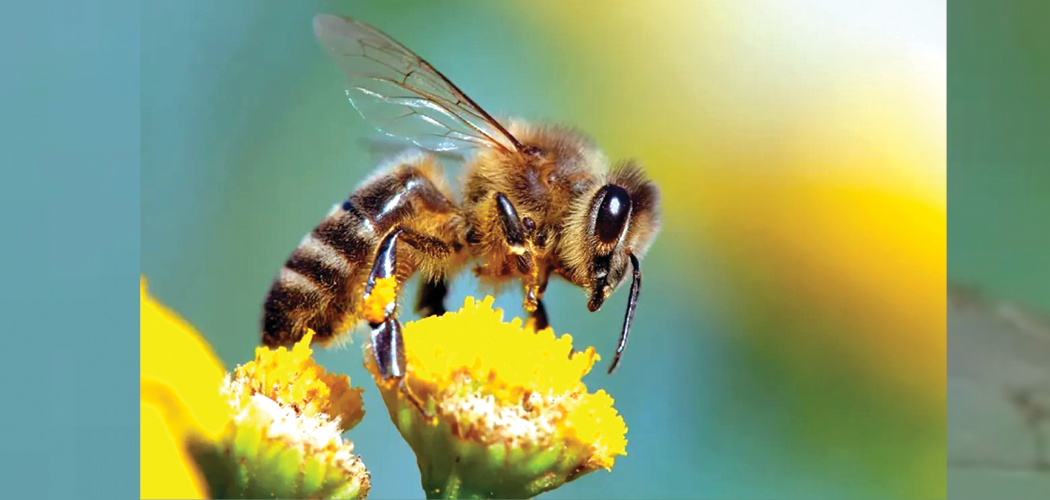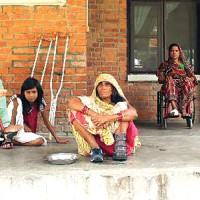- Friday, 23 May 2025
Benefits Of Bee Honey
Persijs Muiznieks
Due to the high-quality properties of honey, many people consume it. When used in certain doses, it is a valuable treatment medicine. However, are we all aware of the effort required by this little insect to obtain honey?
It could be said that the life of bees is seasonal. It depends on the work the bee does. The lifespan of a working bee is about two months; 55 days for servant ones, and up to five years for queen bees. From this, we can judge what kind of superhuman work bees do in their lifetime.
Honey production entirely depends on working bees. They fly from the hive to the plants to collect nectar and pollen from the flowers and return to it to form the wax cells where the resulting substances are delivered. The bees carry the nectar in the oesophagus, where it becomes a mass of honey when mixed with saliva. After that, the mass is vomited out and filled into wax cells. Inside the abdomen, bees have glands that produce wax.
Thanks to the rich range of minerals and vitamins, honey is not only used in the diet but also has its benefits in cosmetics. Honey collectors prefer poly floral honey to monofloral one. Multi-flowered honey is richer in substances needed for healthy skin and hair.
Life of Bees
About 30,000 to 45,000 bees live in one colony which sometimes consists of dozens of hives, of which working bees, produce 500gr. of honey has to fly millions of flowers. The bee repeats this process dozens of times a day. During its working life, it produces honey similar to three drops of water, or about a third of a teaspoon. The working bee feeds on the harvested honey.
From this we conclude - the greater the distance to the flowers, the more energy the bee consumes. As a result, less and lower quality honey is produced. The distance sometimes varies in kilometres. The longer the distance a bee has to travel, the lower the productivity.
Wild honey bees (Apis Mellifera), its hives usually in the shape of a cone are placed in the mountains. Bee colonies establish bags steep rock walls, almost 80m in height, which are usually located near the water, hard to reach these places.
It is a vertical rock wall, with plenty of bumps and small caves. It's dizzying, and if you still have to work up there, you can imagine how risky the job is.
At work
Every year, thousands of people in the world are bitten by bees. What most irritates bees, and why they are attacking people? To this question, reply knew bee hunters, while working along the steep hillsides and know all the bees whim. There are special circumstances when the bees start to behave very aggressively.
That is the colony formation time. At that time happens fierce competition with neighbouring bees. A period, when the bees are very sensitive to the smells and colours.
This is a false belief, use coloured synthetic clothing and approach the bee family during the swarming period, as it often adventure seekers do, avoiding the bees' attacks. In doing so, the bees are provoked even more. In this case, choose body covers in inconspicuous colours. Simple colours that better match the surroundings are the best that can be. Bees also see them, but they are not so provocative.
All around hives fly guard bees that are ready to die just to protect the bee colony. They often lurk on unwanted guests, not only honey collectors but also robber bees that parasitize on the family. The challenge of an attack is often fast-moving and incorrectly chosen protective clothing. Never try to kill or repel a bee with fast movements. The bee will feel it faster and send a signal to the whole family, which will lead to an attack, as the old honey hunter used to teach.
Honey Harvesting
Generally, honey harvesting cleanup participation takes five people. Careful preparations are being made. Already a week earlier, the clothes are kept in a smoke. It is a coarse fabric of some jute material to the size of a sheet intended to cover the body down. The idea behind the smoke is to eliminate unwanted smells from clothes that could provoke bees.
If all the rules of hygiene are followed, the bees will only pay attention at the first moment, but then leave you alone.
The old hunters showed cold-blooded work on a cliff. The only their body cover was coarse cloth.
When everything is ready, over the cliff wall is hanged a rope ladder. The first task is to smudge the hive.
Slowly over the rope ladder, avoiding rapid movements, a hunter with burning leaf tufts approaches beehives. Feeling the smell of smoke, the bees for a moment remain peaceful. This moment, when the bees are slightly stunned, is deftly used. His assistant from the cliff top served a long pole, which intended bee-bags exemption from the cliff wall. It is not always possible to separate all honey from the rock. Sometimes only in parts.
A lot of accidents happen when, the old tow wicker ladders, which are often used for several years in a row and abandoned, hang over the rocky precipice. Sometimes the locals take a sip of stronger alcohol.
The filming took place in the village of Kodari, about three km from the Last Resort. On the banks of the River Kosi. The opposite shore on the highway side was quite high, which gave a wider view of the rural honey collection.
After work, I found an opportunity to meet the owner of the bees colony, who seemed quite tired, but did not refuse the interview.
How productive was the harvest?
I wouldn't say that it was very good, however, enough to endure winter, the owner replied.
On my queries that honey collection is seasonal. Given that bee life is short, how could he predict the next harvest, he replied that they were wild bees and no one coul influence anything there. "Yes, as you mentioned, the life of a bee in the human sense is short. It is the queen bee who takes care of the next harvest, laying about a thousand eggs a day. She is cared for by care-bees who do not collect honey but take care of the family's survival."
Counterfeit Product!
How to understand that tourists risk their lives and dress in special clothing, yet bees ruthlessly attack and bite them? At the same time, I see you working barefoot without any cover and you don't particularly react to the bees around you. Is there any trick?
Bees, like humans, have their character. It doesn't matter as much as you're dressed. Your behaviour is important. These adventurers remain nervous as the bees in their curiosity surround them and they try to repel them with rapid movements, even pressing them. The bees feel it, attack, and start biting even more. The sting is quite long and often special clothing does not protect. It harasses both even more. The bite of wild bees is quite toxic.
A person with weak immunity or allergic diseases takes a high risk. I will not hide, that I have been bitten hundreds of times, the remark follows. Therefore, we provide additional ropes and all safety measures to get the victim to a safe place.
Is the quality of the honey different from what we could buy in the store? The buyer often complains about the presence of sugar. (laughs) We don't know anything about such things. The honey is collected and delivered to the consumer as it is. Its colours may vary depending on the amount of nectar. For generations, we have been practising this job and doing everything we can to ensure that the buyer receives a fresh and genuine product. The honey hunter said: "I know that honey is one of the products that can easily be counterfeited."
Before entering the market, collected honey is thoroughly tested. Fresh honey is rich in vitamins and minerals. Newly collected honey is toxic, and it should be used very carefully. Overdose can cause side effects like allergies, dizziness, vomiting, increase in body temperature The honey in the market is diluted. The international market for wild bee honey is not open.
(The writer is a photojournalist based in Nepal)















